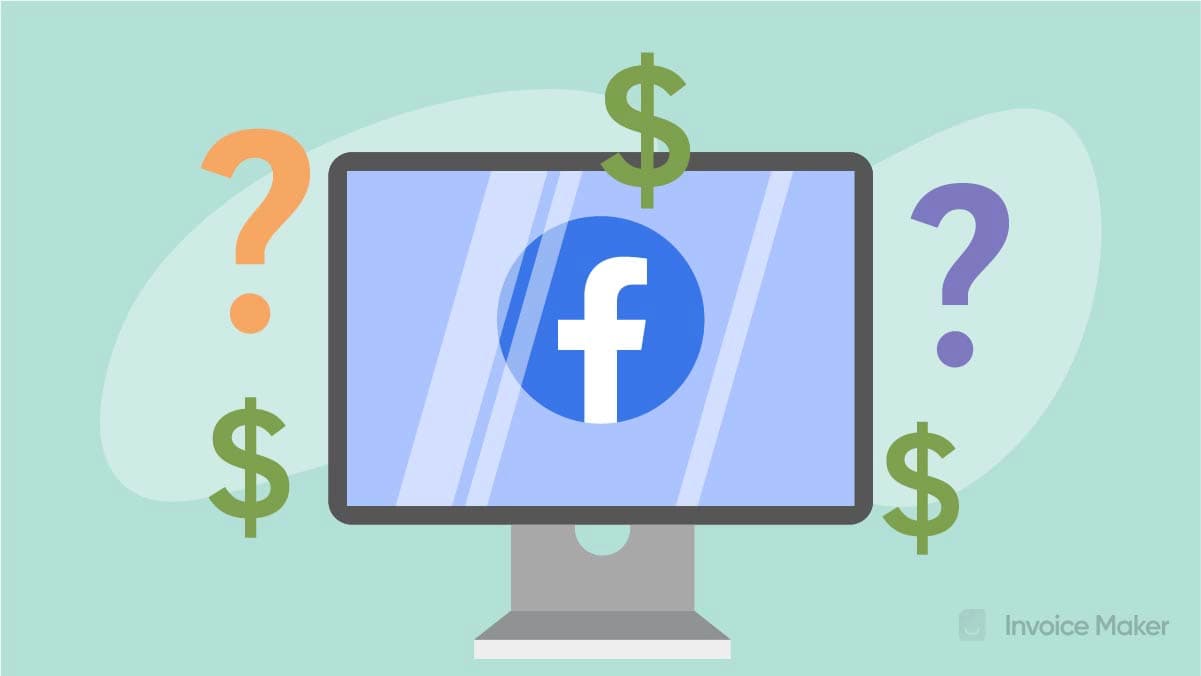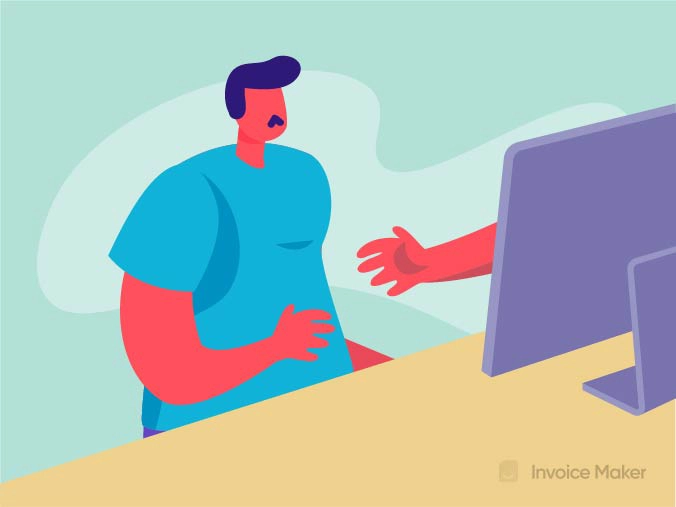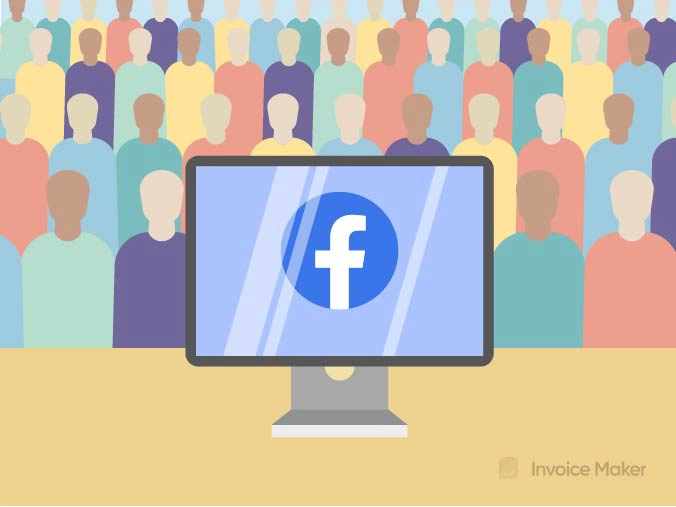Is Facebook Still Worth It for Small Business Marketing?

Since the Facebook Ads platform first launched in 2007, it has been an effective, affordable, and accessible space for small businesses to advertise. Facebook boasts nearly 3 billion active users, making it the most popular social media platform in the world, and with the twin bonuses of international reach and local targeting, Facebook ads have long been a top choice for spending a modest advertising budget.
Make a Free Invoice NowAs you may have noticed, however, online culture is changing rapidly. Between the rise of TikTok, the recent instability of Twitter, and the growth potential of new social media platforms like Hive, Post, and Mastodon, it can be confusing to know how well Facebook ads will perform these days. We took a deep dive for you, so read on for a breakdown of all things Facebook advertising.
A Brief History of Facebook Ads
When Facebook Ads was first developed, it was a space where a business’s profile could exist alongside individual user profiles. A small business could share content, collect friends (now called fans), and engage with other users. This personal interaction was amazing for small businesses, bridging the gap between the extremes of expensive national ad campaigns and putting up fliers around town.
Once your small business was Facebook friends with your customers, clients, and community, you could use the space to share content and announce things like discounts, specials, new products, and events—all for free.
Social Ads
At the same time, a marketplace for targeted Social Ads was introduced, allowing businesses to purchase ads that would appear inside users’ feeds or within the ad space on the main site. Nowadays, this kind of advertising seems obvious, but at the time, it was groundbreaking, and it allowed businesses of all sizes to connect directly with consumers in a personal space.

Sponsored Stories
By 2011, Facebook revealed Sponsored Stories, a marketplace for ads that were embedded directly into users’ news feeds. Ads were directed to users based on pages and other users they visited or liked, making the experience feel much more personalized than a standard banner ad.
In 2012, Sponsored Stories moved marketing content onto the mobile app, and by 2014 a fresh, two-tiered structure was unveiled, that allowed businesses of all sizes to scale their ad spends to fit their budgets.
Extending Options
Starting in 2018, further options were extended to advertisers, offering ads in specific formats and using types of content that best served advertisers’ needs and budgets. Facebook also began offering a huge repository of educational materials for folks to learn how to create ads, including step-by-step instructions for each ad format on offer.
Today’s Facebook is Dynamic
Today, Facebook Ads is a dynamic marketplace that continues to function well for small businesses. Businesses can currently choose from eight advertising options, each of which has specific aspects that will best fit different budgets, content creation skills, types of content, and various consumer audiences.
As social media trends continue to shift and develop, it’s quite likely that these offerings will expand and contract to keep up with the online marketplace. Here’s what’s available today:
Photo
The simplest, most old-school of the options, a photo-only ad is easy to make and, according to Facebook’s internal analytics, is likely to outperform other types of ads. The quality of your image is everything here, so make sure it’s flawless.
Video
More complex and with more options than a photo ad, but still squarely in the realm of tested technology, video ads allow you to create a visual narrative to share a simple message with your network. One new option is 360 video, which allows the user to use their touchscreen to manipulate the angle they’re viewing from for a more engaging and immersive experience.
Messenger
Messenger ads go directly into users’ inboxes (in the Chats tab) and incorporate a call-to-action button that will send them to your website or whatever other online destination you designate.
Stories
If you’re familiar with Instagram Stories, you understand the inspo for Facebook Stories: immersive short-form video content that feels less produced and more intimate than a traditional video.
Carousel
Named for the slide carousel used with a projector, Carousel ads include a collection of images or videos (up to ten) inside of one ad. If you’re advertising a range of products or services, or want to tell a more complex brand story, this roomier format can be a great fit.
Slideshow
With Slideshow ads, you use still images in quick succession to create a video-like effect. They use far less data than video ads which is helpful if your users have slow web connections or older devices. They are extremely simple to set up. You can even use stock imagery, making them a solid pick for DIYers.
Collection
A hybrid ad form, Collections include one cover video or image that appears on its own landing page, and three product images that live within that landing page. It’s a great form for stores or other product-based businesses with multiple images to showcase within a single brand story.
Playable Content
Playable ads appear within games and are typically used by people who are testing and developing apps.
Navigating the Metaverse

In 2021, Facebook rebranded as Meta, and the idea of the Metaverse was introduced: an upleveling of the existing online world to an immersive experience that incorporates virtual reality, augmented reality, and interactive video content. Gaming, NFTs, and virtual property are part of the economy of the Metaverse, so people are getting more and more comfortable with the concept of using “real money” in virtual reality spaces.
What the Metaverse will mean in terms of the average person’s daily life isn’t yet clear, but what is certain is that it will dramatically expand the ways businesses are able to reach consumers through advertisements. Imagine a potential customer playing their favorite online game, fully immersed with a VR headset, and then encountering an avatar of your product or service within their experience. Imagine creating a branded NFT, creating a virtual store in the Metaverse, or purchasing virtual real estate on behalf of your business.
If these ideas feel exciting and overwhelming, you’re not alone. The coolest part of the Metaverse is that we are all—consumers and businesses alike—learning about it at roughly the same pace, and the opportunities of the Metaverse are a great reason to stay tethered to Facebook as an advertising marketplace.
Tips and Best Practices for Advertising
Whether you’re new to advertising your business or are considering making changes to how you’re spending your current ad budget, it’s a great idea to do a brief quality control overhaul of how you’re approaching content creation, regardless of the platform you’re using.
Quality is Key
No matter where you advertise, quality content should be your priority. Yes, it’s tempting to want to just get your name out there, but do you really want to be known as the business with the tacky and annoying ads, or do you want to be remembered for thoughtfully produced and expertly curated content that reaches a receptive audience?
Consider Working With a Pro
Working with a marketer will shorten the learning curve substantially and allow you to put a great ad out from the very start. If you can afford it, a marketing pro is well worth their fee.
Learn the Platform
If paying for a marketing consultant simply isn’t in the budget, or if you just really want to learn to manage this aspect of your business on your own, spending some time learning the ins and outs of the site is a must. Start with these resources from Meta, consider taking a third-party course in digital marketing specific to Facebook, and understand that it will take a bit of time to become adept and comfortable at creating ads.
Focus on Copy
When you’re writing your ads (no matter what kind of content they’ll be), make your copy your main priority. No matter how flashy or beautiful your visual media is, copy that sounds awkward or robotic will make it feel like an intrusive ad. You want to talk to your consumer like a friend, so find a brand voice that is easy, fun, and approachable. If this isn’t your skill set, consider hiring a freelance copywriter to create or edit your words for you.
The Takeaway

While today there is a greater variety of affordable options for digital advertising than ever before, Facebook remains at the forefront of what is possible in online marketing. By using the platform, you can reach a vast audience and position yourself for a seamless transition into future developing ad technologies. Whether you’re working with marketing pros or are strictly DIY, Facebook ads continue to be a valuable marketing tool for businesses of all sizes.


